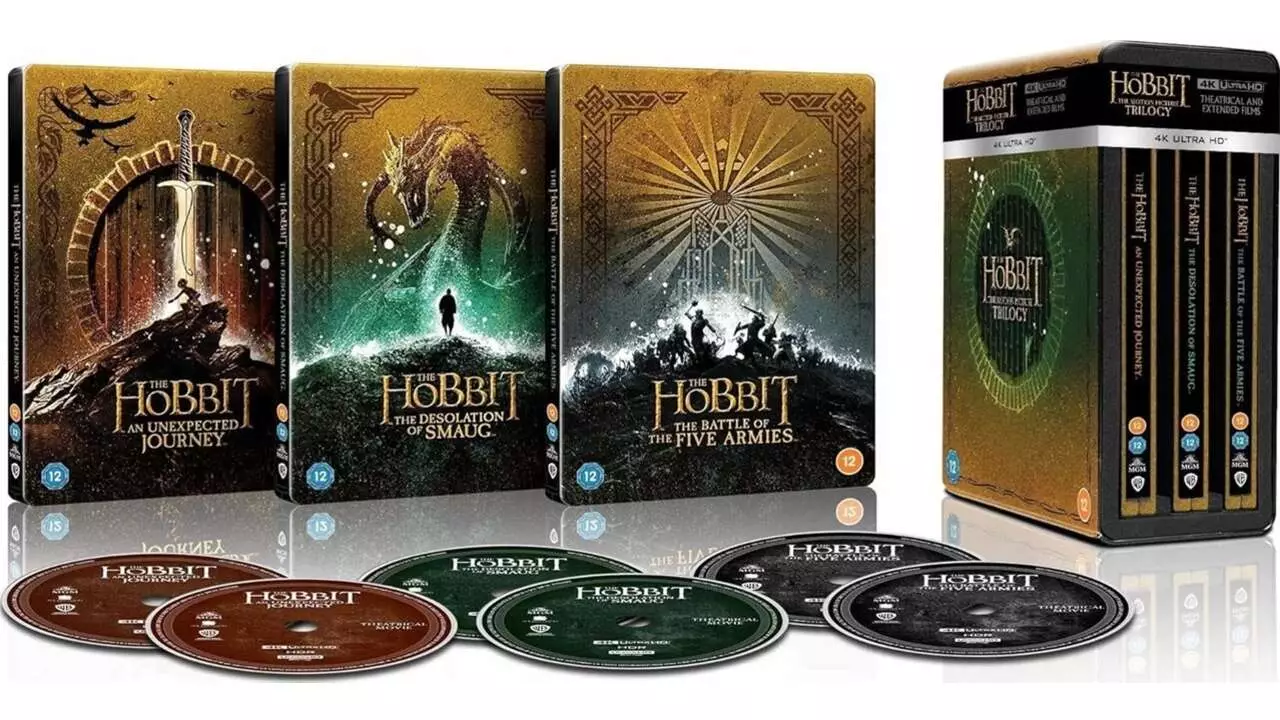J.R.R. Tolkien’s literary masterpieces have had lasting impacts on both literature and cinema, but none more so than his monumental works, “The Lord of the Rings” and “The Hobbit.” While Peter Jackson’s adaptation of the former has garnered nearly universal acclaim, the cinematic journey of “The Hobbit” presents a contrasting narrative. Delving into the complexities and decisions made during the adaptation process reveals significant shifts in audience reception, storytelling strategies, and ultimately, the artistic integrity of Tolkien’s original work.
Tolkien’s “The Hobbit,” a much shorter and more whimsical tale compared to “The Lord of the Rings,” was adapted into a trilogy by Jackson—a choice that raises eyebrows since the original narrative can be comfortably contained within a single film. Inevitably, this decision transformed a concise adventure into a sprawling cinematic experience. The result was not just lengthier films but also a shift in tone that often drew criticism. Jackson’s commitment to creating a monster-filled spectacle, combined with a backstory to connect “The Hobbit” to “The Lord of the Rings,” may have diluted the charm of Bilbo’s simpler tale.
The sequel fever that can sometimes plague Hollywood seemed to have infected Jackson’s interpretation. The expansion into three films, each laden with CGI and drawn-out action sequences, appeared to stray from the essence of the original text. This divergence arguably shifted the perspective away from the charming adventure of Bilbo Baggins to more grandiose themes and much heavier character arcs. Critics often voice that “The Hobbit” should have honored its roots more, capitalizing on its initial lightness, rather than trying to fit it into the darker and more complex world of Middle-earth as established by its predecessor.
Despite the mixed reviews, fans of Jackson’s trilogy can derive satisfaction from the collectible nature of the film adaptations. The recently released Limited Edition Steelbook Collection for “The Hobbit” offers devoted fans a chance to bring home a piece of cinematic art, especially for those who appreciate the craftsmanship of physical media. Valued at $150, a significant markdown from its usual $200 price tag, this collection features all three films in 4K format, encompassing both theatrical and extended editions. This visual upgrade enhances the spectacular landscapes of Middle-earth while providing various viewing experiences that fans crave.
Having discreetly curated steelbook cases paired with a stylish box, this collection not only serves as a home for the discs but also elevates the aesthetic value of any film library. The inclusion of both the theatrical and extended cuts allows viewers to choose between succinct storytelling and detailed exposition, addressing varied preferences and fostering re-watchability.
For those looking for a more economical option, the standard Blu-ray set of “The Hobbit” Trilogy is available for $46, lacking the steelbooks and collectors’ box. Yet, this version still offers substantial value by including the same enhanced viewing options of the collector’s choice. It becomes clear that for casual viewers or newer fans, the premium pricing of the steelbook version may feel excessive, whereas the basic bundle provides an accessible entry point into the cinematic world that has captivated audiences for nearly two decades.
However, collectors often justify higher expenditures in terms of their long-term value and desirability. Items like these limited editions not only invite wonder among collectors but also possess a unique pedigree in film buff circles.
While “The Hobbit” may not hold the same veneration as “The Lord of the Rings,” its adaptation reflects broader trends in film-making and audience expectations. With the immediate allure of physical packages and collectible items, fans are drawn into the splendor of Middle-earth time and again. Additionally, upcoming collections, such as “The Lord of the Rings Trilogy: One Ring Gift Box,” display a growing trend whereby fans seek immersive experiences combined with physical memorabilia.
As the adaptations continue to reveal different layers of J.R.R. Tolkien’s legendarium, they invite both analysis and appreciation, serving as a reminder of the perpetual interplay between literature and its cinematic counterparts. The discussion surrounding the adaptations is as complex as the narratives themselves, continuously urging fans, critics, and casual observers alike to engage in meaningful discourse about storytelling in the modern era.

